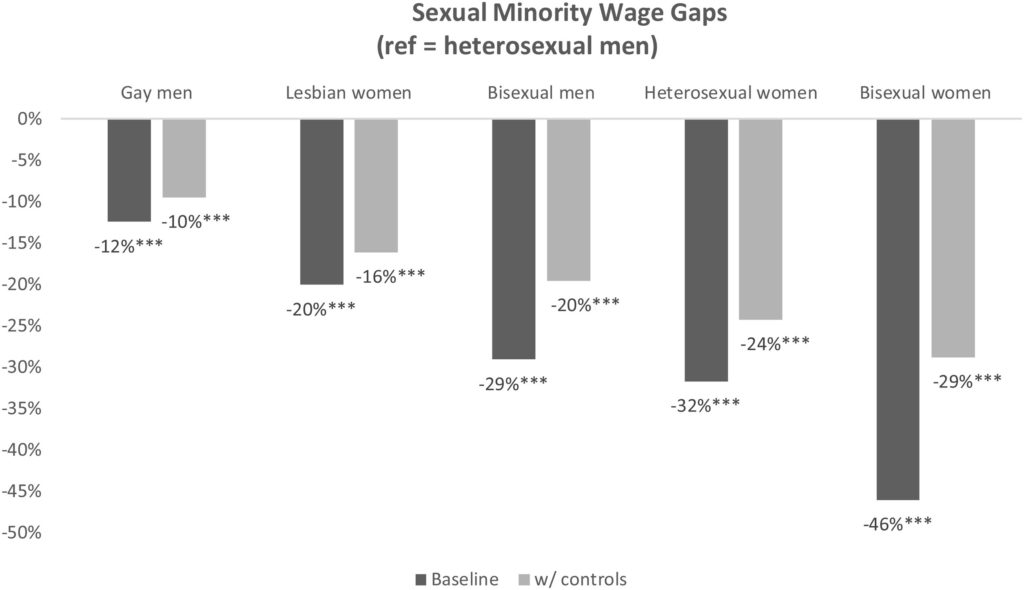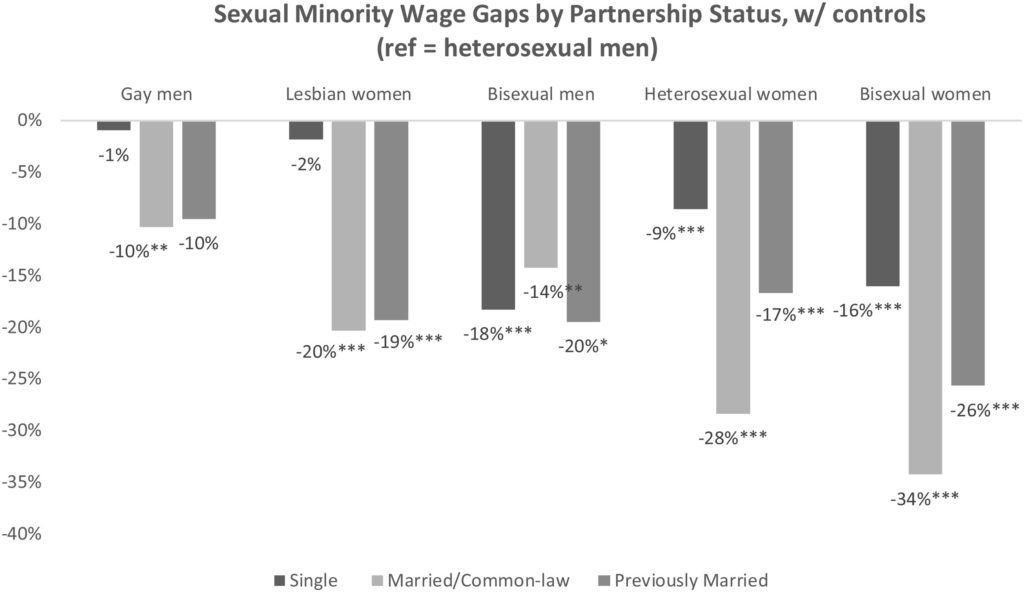Many studies have documented the existence of a pay gap between salaries earned by men and women. Now, new research from Western University has shown that sexual orientation also contributes to wage inequalities.
The study was led by Sean Waite, assistant professor of sociology at Western University, and published in Research in Social Stratification and Mobility.
Sexual orientation factors into workplace inequalities
In Canada, the Federal Employment Equity Act aims to reduce discrimination and achieve equity in workplaces. It currently protects four marginalized groups from workplace discrimination: women, Aboriginal peoples, persons with disabilities, and members of visible minorities.
Sexual orientation, however, is not taken into account, but almost certainly plays into workplace inequalities. This is what Waite sought out to explore with his study.
To do this, he and his collaborators used data from 10 cycles of the confidential Canadian Community Health Survey between 2007 and 2017. The survey includes direct questions on both income and sexual orientation, as well as relationship status. This allowed Waite to explore the differences in employment and salaries of lesbian, gay, bisexual, and heterosexual respondents.
Other sexual or gender orientations were not covered in this particular article; however, previous studies have explored some of these issues.
Waite and his collaborators found that a wage hierarchy exists based on sexual orientation, with heterosexual men having both the highest employment rate of all groups (87%) as well as earning significantly more than any other groups — 10% more than gay men, for example, and 29% more than bisexual women.
In general, Waite found that bisexual women were the most disadvantaged group of those included in the survey. They both earned less and were less likely to be employed than other sexual orientations studied.

Partnership status also contributes to the wage gap
Waite also found that partnership status had an effect on the results. He attributes some of this to cultural stereotypes of the “ideal worker” in a heterosexual relationship, which the authors describe as “a married heterosexual male with children who does not have to balance the dual responsibilities of work and family because of a division of labour in the household.”
As an example, Waite points out that the wage gap between single heterosexual men and women (9%) is much smaller than that between coupled heterosexual men and women (28%). Cultural stereotypes of heterosexual relationships and families are likely part of what led to this large difference.
Single gay and lesbian respondents reported wages that were almost indistinguishable from those of single men (1% and 2%, respectively), but when the authors looked at partnered gay and lesbian respondents, the gaps increased dramatically (10% and 20%, respectively).
The “ideal worker” stereotype may again be to blame, as well as the documented phenomena of so-called fatherhood premiums in workplaces. Previous studies have shown that married heterosexual men with children earn higher wages than their unmarried counterparts, and while the exact reason for this is not known, part of it may have to do with unconscious biases that endorse the “traditional” family model and lead to married heterosexual fathers earning more than coupled gay or lesbian employees.
The authors also note that division of labour in relationships may explain some of the results. Same-sex couples tend to have more egalitarian divisions of labour, which would reduce individual earnings for coupled gay men relative to coupled heterosexual men, but increase individual earnings for coupled lesbian women relative to coupled heterosexual women.
The authors did find that the wage gap between coupled heterosexual women and men (28%) was much larger than that between coupled lesbian women and coupled heterosexual men (20%), which fits in with this theory.
Regardless of partnership status, the authors found that bisexual men and women earned significantly less than heterosexual men. They note that more research is needed to understand the employment outcomes and experiences of bisexual individuals, but mention biphobia and discrimination as two potential causes.

First steps in addressing systemic inequities
Waite feels that including sexual orientation in the Employment Equity Act would be a good way to get started on addressing these systemic inequities.
“I feel that would be a nice first step to embrace diversity and would force federally regulated industries, including universities, to keep numbers of lesbian, gay, and bisexual individuals within their organization and take steps to accommodate diversity and difference in the labour market,” he said.
Going forward, the authors hope to see more work done on understanding and addressing these workplace biases.
“We hope that this study becomes a catalyst for more research and data on LGB employment,” they said in the article, “especially the experiences of bisexual people, who are particularly disadvantaged in the labour market.”




































